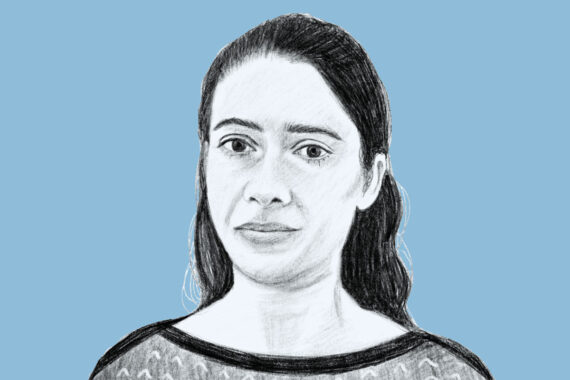Dr Katie Musgrave tells the tale of the Gillumps of Jannicuto, who left their lifetime’s work behind as they could not keep up with their leaders’ demands
Have you heard about the Gillumps, who once lived on the island of Jannicuto?
These unassuming elf-like creatures managed the woodland on their remote island. As talented woodworkers, they were renowned for creating magical carved statues like nothing you’ve ever seen. It was said that these statues could stave away evil spirits, physical ill health, or mental anguish. And they did – the people living on Jannicuto were extraordinarily happy and healthy.
The craftsmanship of the Gillumps took decades to hone. Younger Gillumps would learn from older Gillumps, practising daily – only being let loose on their own trees after 10 years of apprenticeship. The very best Gillumps took a whole lifetime to master their art.
But one day, the leaders from the mainland next to Jannicuto visited the island’s woodland. The mainland leaders had been struggling to keep their population content and under control. They feared they might soon be overthrown. So, when the leaders discovered a small community of Gillumps, and witnessed the power of the carvings, they immediately decided they needed to get hold of these magical creations.
Although there had always been plenty of carved statues for the households of Jannicuto, the leaders of the mainland wanted to use the carvings to impress their own people and secure more power. The leaders promised to provide the people of the mainland with a never-ending supply of magical statues, quickly available at any time of day or night.
The Gillumps were gentle and amenable creatures. They lived in small communities, with a range of woodland helpers. These groups produced a slow and steady stream of carvings, out of a passion for their craft. The Gillumps weren’t equipped to stand up to the visiting leaders and were easily bullied and manipulated into feeling responsible for producing more statues.
When the mainland leaders found the Gillumps unable to keep up with the demand they had stoked for the carvings, they decided to build factories (to streamline the process) and persuaded many of the Gillumps to work in them. But still, the Gillumps couldn’t keep up with the leaders’ demands.
Next, the leaders said they should bring in new workers to help them; the carved statues could be made more quickly if there were other creatures involved. ‘No! That’s not right!’ the Gillumps tried to explain. ‘The new helpers do not have our gifts or years of training; they will never be able to replicate our carvings.’ They tried to explain that they had always had special woodland helpers who assisted in lots of ways, but the carving must be left to a Gillump.
But the Gillumps didn’t like to cause upset. They were easy to exploit and were quickly moved off their land. Unfortunately, to the mainland leaders’ shock and disappointment, the new helpers they’d brought in were unable to make carvings like the Gillumps. The new statues were crude and imperfect. They wobbled, had cracks and blemishes, and no longer held magical powers.
Furthermore, the Gillumps could not cope with working more quickly on factory conveyor belts. They belonged in the woodland, in their traditional communities. They grew sad and agitated. Some developed inexplicable diseases. Many said they couldn’t carve any more. Other Gillumps wandered silently into the forest and disappeared.
After the carvings from the factories lost their magic, the people of Jannicuto and the mainland grew frustrated with the Gillumps. Then they grew angry. They did not blame the irresponsible leaders, but the Gillumps themselves. Their newspapers printed reports saying the Gillumps were lazy, greedy, and selfish. Nobody seemed to understand they had been exploited and were dying.
Eventually, the last remaining Gillumps on the island were ordered to leave the factories – the leaders couldn’t bear to see a reminder of what they had destroyed. Any final statues were gathered up and burned.
The people of Jannicuto grew sicker. Initially, they spoke wistfully about the Gillumps and their carvings, remembering their power to heal. But over time, even the islanders said the Gillumps hadn’t been particularly skilled woodworkers, and the statues were a myth.
After all, how could a collection of quiet forest elves have created magical statues that protected from disease?
Dr Katie Musgrave is a GP in Devon and quality improvement fellow for the South West
Pulse October survey
Take our July 2025 survey to potentially win £1.000 worth of tokens
















Poignant and beautifully written.
A cautionary tale, and so sad, and so powerful
Among the Gillumps were self-appointed elders. They had given up carving and instead gathered around tables to eat prawn sandwiches. They insisted that the master-carvers completed annual training on the use of fire-extinguishers and lifting logs which frustrated the Gillumps, especially those who had completed the training many times before. They appraised and inspected the carvings of their kinfolk, and gave them crayons to decorate their work. They gathered data on each of the Gillumps, praising those who carved many basic statues and criticising those who did the most intricate and beautiful work but carved fewer. These elders agreed with everything the leaders said in the hope that they would be rewarded with gongs which they treasured above carvings. ‘We must ensure that anyone can see a Gillump and get a statue whenever they want to’ they cried, and beat the Gillumps with sticks when previously they had applauded them. The last of the Gillumps got together. They threw out the elders and said, ‘let’s go back to making good carvings for a few people, we’ll make them nice carvings and they will give us peanuts in exchange’. Those Gillumps grew fat and content and wondered why they’d ever gone along with the old system
A very worthwhile read and excellence in writing.
Great read Katie